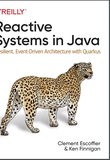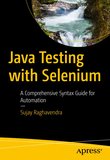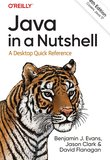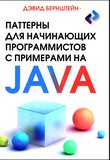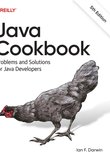-
.NET (.NET Core)
-
1C
-
APL
-
AWK
-
Agda
-
Agile/Scrum
-
Alef
-
Assembler
-
Basic
-
Beta Programming Language
-
Big Data/DataScience
-
C
-
C#
-
C++
-
CSS
-
Cobol
-
Crystal
-
D
-
Dart
-
DataBase (SQL)
-
Delphi
-
F#
-
Flutter
-
Fortran
-
GPT/AI/ИИ
-
GameDev
-
Git
-
Go (Golang)
-
HTML
-
Hacking and Security
-
Haskell
-
Java
-
JavaScript (JS)
-
Julia
-
Kotlin
-
Machine Learning (ML)
-
Natural language processing (NLP)
-
PHP
-
Pascal
-
Python
-
R
-
Ruby
-
Rust
-
Scratch
-
Swift
-
UML
-
UX/UI
-
Visual Basic
-
Wolfram
-
XML
-
АСУ
-
Проектирование/System Design
-
Сети/Network
-
Схемотехника/электронные схемы
-
.NET (.NET Core)
-
1C
-
APL
-
AWK
-
Agda
-
Agile/Scrum
-
Alef
-
Assembler
-
Basic
-
Beta Programming Language
-
Big Data/DataScience
-
C
-
C#
-
C++
-
CSS
-
Cobol
-
Crystal
-
D
-
Dart
-
DataBase (SQL)
-
Delphi
-
F#
-
Flutter
-
Fortran
-
GPT/AI/ИИ
-
GameDev
-
Git
-
Go (Golang)
-
HTML
-
Hacking and Security
-
Haskell
-
Java
-
JavaScript (JS)
-
Julia
-
Kotlin
-
Machine Learning (ML)
-
Natural language processing (NLP)
-
PHP
-
Pascal
-
Python
-
R
-
Ruby
-
Rust
-
Scratch
-
Swift
-
UML
-
UX/UI
-
Visual Basic
-
Wolfram
-
XML
-
АСУ
-
Проектирование/System Design
-
Сети/Network
-
Схемотехника/электронные схемы
Меню
Quick Java
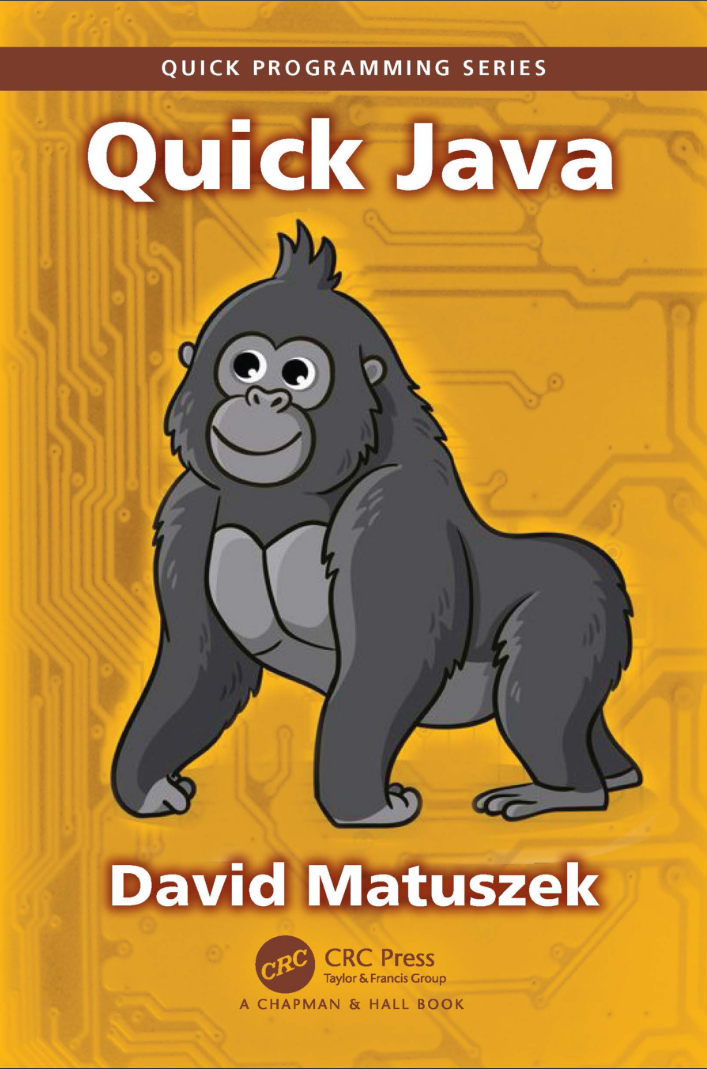
Автор: Matuszek David
Дата выхода: 2023
Издательство: CRC Press is an imprint of Taylor & Francis Group, LLC
Количество страниц: 235
Размер файла: 1,1 МБ
Тип файла: PDF
Добавил: codelibs
Cover
Half Title
Title Page
Copyright Page
Dedication
Contents
Author
Preface
Versions
Chapter 1. A Lightning Tour of Java
1.1 Projects
1.2 First Glimpse: The Circle Class
1.3 Data
1.4 Operators
1.5 Program Structure
1.6 Statements
1.7 Program Execution
1.8 Hello World
Chapter 2. Preliminaries
2.1 IDEs
2.2 Comments and Tags
Chapter 3. The "Inner Language" of Java
3.1 Variables and Naming Conventions
3.2 Basic Data Types
3.2.1 Primitive Types
3.2.2 Arrays
3.2.3 Strings
3.2.4 Exceptions
3.2.5 Operators and Precedence
3.2.6 Declarations and Casting
3.2.7 Constants
3.2.8 Methods
3.2.9 Methods Calling Methods
3.2.10 Overloading
3.2.11 Scope
3.2.11.1 Variables Declared in Classes
3.2.11.2 Variables Declared in Methods
3.2.11.3 Variables Declared in Blocks
3.3 Statement Types
3.3.1 Statements Also in C++
3.3.1.1 Blocks
3.3.1.2 Assignment Statements
3.3.1.3 Method Calls and Varargs
3.3.1.4 If Statements
3.3.1.5 While Loops
3.3.1.6 Do-while Loops
3.3.1.7 Traditional For Loops
3.3.1.8 For-each Loop
3.3.1.9 Classic switch Statements
3.3.1.10 Labeled Statements
3.3.1.11 Break Statements
3.3.1.12 Continue Statements
3.3.1.13 Return Statements
3.3.1.14 Empty Statements
3.3.2 Statements Not in C++
3.3.2.1 Assert Statements
3.3.2.2 Print "Statements"
3.3.2.3 Switch Statements and Expressions
3.3.2.4 Pattern Matching in switch Statements
3.3.2.5 Try-catch-finally
3.3.2.6 Throw Statements
3.3.3 Reading from a File
3.3.4 Try With Resources
3.3.5 Writing to a File
3.4 Classes and Objects
3.4.1 Some Useful Objects
3.4.1.1 String Objects
3.4.1.2 StringBuilder Objects
3.4.1.3 Using Scanner
3.4.1.4 Console
3.4.1.5 Objects, Generics, and Stacks
3.4.1.6 Maps
3.4.1.7 The Java API
3.5 Objects and Classes
Chapter 4. The "Outer Language" of Java
4.1 Class Structure
4.1.1 A Simple Class
4.1.2 The Class Header
4.1.3 Interfaces I
4.1.4 Fields
4.1.5 Constructors I
4.1.6 Defining Methods
4.1.7 Example: Bank Account
4.1.8 References
4.1.9 Constructors II
4.1.10 Static
4.1.11 Escaping Static
4.1.12 The Main Method
4.1.13 A More Complete Example
4.2 Inheritance
4.3 Casting Objects
4.4 Overriding
4.4.1 Overriding toString
4.4.2 Overriding Equals
4.4.3 Overriding HashCode
Chapter 5. Advanced Java
5.1 Information Hiding
5.1.1 Reasons for Privacy
5.1.2 Getters and Setters
5.1.3 Private Constructors
5.2 The Inner Language
5.2.1 General
5.2.1.1 Ordering
5.2.1.2 Javadoc
5.2.1.3 Var Declarations
5.2.1.4 Namespaces
5.2.2 Data
5.2.2.1 Wrapper Classes
5.2.2.2 Integers
5.2.2.3 Doubles
5.2.2.4 Characters and Unicode
5.2.2.5 Booleans
5.2.2.6 Other Primitives
5.2.2.7 Arrays
5.2.2.8 Strings
5.2.2.9 Multiline Strings
5.2.2.10 Formatter
5.2.2.11 Regular Expressions
5.2.3 Collections
5.2.3.1 Iterators
5.2.4 Additional Operators
5.2.4.1 instanceof
5.2.4.2 The Ternary Operator
5.2.4.3 Bit and Shift Operators
5.2.4.4 Increment and Decrement Operators
5.3 The Outer Language
5.3.1 Generic Classes
5.3.2 Interfaces II
5.3.3 Abstract Classes
5.3.4 Final and Sealed Classes
5.3.5 Inner Classes
5.3.5.1 Member Classes
5.3.5.2 Static Member Classes
5.3.5.3 Local Inner Classes
5.3.5.4 Anonymous Inner Classes
5.3.6 Enums
5.3.7 Records
5.3.8 Serialization
5.3.9 Modules
5.3.10 Build Tools
Chapter 6. Functional Programming
6.1 Function Literals
6.2 Functional Interfaces
6.3 Implicit Functional Interfaces
6.4 Persistent Data Structures
Chapter 7. Unit Testing
7.1 Philosophy
7.2 What to Test
7.3 JUnit
7.4 JUnit 5 Assertions
7.5 Testing Exceptions
7.6 Assumptions
7.7 Simple Test Example
Chapter 8. GUIs and Dialogs
8.1 A Brief History
8.2 Dialogs
8.2.1 Message Dialog
8.2.2 Confirm Dialog
8.2.3 Input Dialog
8.2.4 Option Dialog
8.2.5 Color Chooser Dialog
8.2.6 Load File Dialog
8.2.7 Save File Dialog
8.2.8 Custom Dialog
Chapter 9. How to Build a GUI Program
9.1 Event-Driven Programs
9.2 The Event Dispatch Thread
9.3 Import the Necessary Packages
9.4 Make a Container
9.5 Add a Layout Manager
9.6 Create Components
9.7 Add Listeners
9.8 Sample Code
9.8.1 JFrame and JPanel
9.8.2 JEditorPane
9.8.3 JScrollPane
9.8.4 JTabbedPane
9.8.5 JButton
9.8.6 JTextField
9.8.7 JTextArea
9.8.8 JCheckBox
9.8.9 JRadioButton
9.8.10 JLabel
9.8.11 JComboBox
9.8.12 JSlider
9.8.13 JSpinner
9.8.14 JProgressBar
9.8.15 Menus
9.8.16 Keyboard Input
9.8.17 Mouse Input
9.9 DiceRoller
Chapter 10. Threads and Animation
10.1 Threads
10.2 Synchronization
10.3 Timers
10.4 Property Changes
10.5 SwingWorker
10.6 The Bouncing Ball
10.6.1 MVC
10.6.2 Controller
10.6.3 Model
10.6.4 View
Appendix A. Code for BouncingBall
Bouncing Ball: Controller
Bouncing Ball: Model
Bouncing Ball: View
Index
This is a compact and practical guide for those who want to quickly learn and start programming in Java. The book is intended for both novice developers and those who already have some experience in programming and want to expand their knowledge in the field of Java. The book is designed to help readers quickly enter the world of Java programming, providing the necessary knowledge and practical skills to create Java applications.
